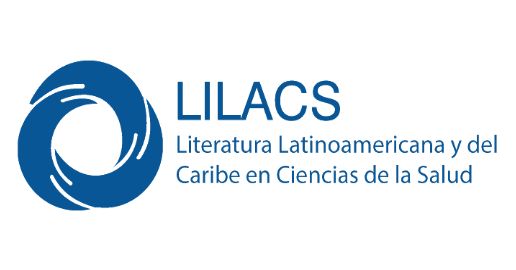
Esta obra está bajo una licencia internacional Creative Commons Atribución-NoComercial-CompartirIgual 4.0.
Los autores que publiquen en esta Revista aceptan las siguientes condiciones:
Acta Colombiana de Psicología se guía por las normas internacionales sobre propiedad intelectual y derechos de autor, y de manera particular el artículo 58 de la Constitución Política de Colombia, la Ley 23 de 1982 y el Acuerdo 172 del 30 de Septiembre de 2010 (Reglamento de propiedad intelectual de la Universidad Católica de Colombia)
Los autores conservan los derechos de autor y ceden a la Revista el derecho de la primera publicación, con el trabajo registrado con la Este obra está bajo una licencia de Creative Commons Reconocimiento-NoComercial-CompartirIgual 4.0 Internacional, que permite a terceros utilizar lo publicado siempre que mencionen la autoría del trabajo y a la primera publicación en esta Revista.
Resumen
El objetivo del presente estudio fue analizar la estructura interna de la versión abreviada del Inventario de Respuestas de Afrontamiento (CRI-A) con una muestra de 987 individuos con edades entre los 18 y 63 años (M = 29; DE = 9.86) de la ciudad de Buenos Aires, Argentina. Se compararon tres modelos mediante análisis factoriales confirmatorios: el Modelo 1, con el ajuste de los 24 reactivos de la versión abreviada del CRI-A a los factores de aproximación y evitación; el Modelo 2, con el ajuste de los 24 reactivos a cuatro dimensiones según foco y método; y el Modelo 3, con el ajuste de los 24 reactivos a ocho dimensiones con factores de segundo orden de aproximación y de evitación. Los modelos 1 y 2 reespecificados mostraron ajustes adecuados, con valores de χ² (GL) = 650.18 (146), RMSEA (IC 90 %) = .07 (.07-.08), SRMR = .08, CFI = .92, TLI = .91, GFI = .96, PNFI = .73, AIC = 46629.55, y χ² (GL) = 747.55 (146), RMSEA (IC 90 %) = .06 (.06-.07), SRMR = .07, CFI = .93, TLI = .92, GFI = .97, PNFI = .79, AIC = 51908.43, respectivamente, e invarianza según el género. El Modelo 1 mostró valores de confiabilidad más elevados. A partir de los resultados y del modelo teórico de base, se arribó a una versión abreviada del CRI-A válida y fiable, con 19 reactivos que miden cuatro factores.
Palabras clave

Citas
Allen, M. T. (2021). Explorations of avoidance and approach coping and perceived stress with a computer-based avatar task: detrimental effects of resignation and withdrawal. PeerJ, 9, e11265. https://doi.org/10.7717/ peerj.11265
American Psychological Association [APA]. (2010). Publication Manual of the American Psychological Association (6.a ed.). American Psychological Association.
Aspinwall, L. G., & Taylor, S. E. (1997). A stitch in time: self-regulation and proactive coping. Psychological Bulletin, 121(3), 417-436. https://doi.org/10.1037/0033-2909.121.3.417
Ato, M., López-García, J. J., & Benavente, A. (2013). Un sistema de clasificación de los diseños de investigación en psicología. Anales de Psicología, 29(3), 1038-1059. https://dx.doi.org/10.6018/analesps.29.3.178511
Bandalos, D. L., & Finney, S. J. (2018). Factor analysis: Exploratory and confirmatory. En G. R. Hancock & R. O. Mueller (Eds.), The reviewer’s guide to quantitative methods in the social sciences (pp. 98-122). Routledge.
Biggs, A., Brough, P., & Drummond, S. (2017). Lazarus and Folkman’s psychological stress and coping theory. En C. L. Cooper & J. C. Quick (Eds.), The Handbook of Stress and Health: A Guide to Research and Practice (pp. 351-364). Wiley Blackwell. https://psycnet.apa.org/doi/10.1002/9781118993811.ch21
Blalock, J. A., & Joiner, T. E. (2000). Interaction of cognitive avoidance coping and stress in predicting depression/ anxiety. Cognitive Therapy and Research, 24(1), 47-65. https://doi.org/10.1023/A:1005450908245
Brown, T. A. (2006). Confirmatory factor analysis for applied research. Guilford publications.
Byrne, B. M. (2016). Multigroup comparisons: Testing for measurement, structural, and latent mean equivalence. En F. T. L. Leong, D. Bartram, F. M. Cheung, K. F. Geisinger & D. Iliescu (Eds.), The ITC International Handbook of Testing and Assessment (pp. 377-394). Oxford University Press.
Chalmers, R. P. (2018). On Misconceptions and the Limited Usefulness of Ordinal Alpha. Educational and psychological measurement, 78(6), 1056-1071. https://doi.org/10.1177/0013164417727036
Cohen, J. (1988). Statistical Power Analysis for the Behavioral Sciences (2.a ed.). Routledge.
Crespo, M., & Labrador, F. (2003). Estrés. Síntesis. Cronbach, L. J. (1951). Coefficient alpha and the internal structure of tests. Psychometrika, 16(3), 297-334. https:// doi.org/10.1007/BF02310555
Davidov, E., Schmidt, P., Billiet, J., & Meuleman, B. (Eds.). (2018). Cross-cultural analysis: Methods and applications (2.a ed.). Routledge.
Eyles, D. J., & Bates, G. W. (2005). Development of a shortened form of the Coping Responses Inventory-Youth with an Australian sample. North American Journal of Psychology, 7(2), 161-170. https://figshare.swinburne. edu.au/ndownloader/files/47534270
Flora, D. B. (2020). Your coefficient alpha is probably wrong, but which coefficient omega is right? A tutorial on using R to obtain better reliability estimates. Advances in Methods and Practices in Psychological Science, 3(4), 484-501. https://doi.org/10.1177/2515245920951747
Folkman, S. (2020). Stress: Appraisal and Coping. En M. D. Gellman & J. R. Turner (Eds.), Encyclopedia of Behavioral Medicine (pp. 1913-1915). Springer.
Folkman, S., & Moskowitz, J. T. (2004). Coping: Pitfalls and promise. Annual Review of Psychology, 55(1), 745-774. http://dx.doi.org/10.1146/annurev.psych.55.090902.141456
Frydenberg, E. (2017). Coping and the Challenge of Resilience. Springer.
Fu, W., Wang, C., Zou, L., Guo, Y., Lu, Z., Yan, S., & Mao, J. (2020). Psychological health, sleep quality, and coping styles to stress facing the COVID-19 in Wuhan, China. Translational Psychiatry, 10(1), 1-9. https://doi.org/10.1038/ s41398-020-00913-3
Gadermann, A. M., Guhn, M., & Zumbo, B. D. (2012). Estimating Ordinal Reliability for Likert-Type and Ordinal Item Response Data: A Conceptual, Empirical, and Practical Guide. Practical Assessment, Research & Evaluation, 17, 3. http://files.eric.ed.gov/fulltext/EJ977577.pdf
Gallucci, M., & Jentschke, S. (2021). SEMLj: jamovi SEM Analysis. [jamovi module]. https://semlj.github.io
George, D., & Mallery, P. (2011). Descriptive statistics. En S. Hartman (Ed.), SPSS for Windows Step by Step: A Simple Guide and Reference 18.0 Update (pp. 95-104). Pearson.
Gomis-Pomares, A., Villanueva, L., & Basto-Pereira, M. (2022). Psychometric Properties of the Deviant Behavior Variety Scale in Young Spanish Adults. Psicothema, 34(2), 308-315. https://www.psicothema.com/pdf/4750.pdf
Green, S. B., & Yang, Y. (2009). Reliability of summed item scores using structural equation modeling: An alternative to coefficient alpha. Psychometrika, 74(1), 155-167. https://doi.org/10.1007/s11336-008-9099-3
Groth-Marnat, G. (2009). Handbook of Psychological Assessment (5.a ed.). John Wiley & Sons.
Gurvich, C., Thomas, N., Thomas, E. H., Hudaib, A. R., Sood, L., Fabiatos, K., Sutton, K., Isaacs, A., Arunogiri, S., Sharp, G., & Kulkarni, J. (2020). Coping styles and mental health in response to societal changes during the COVID-19 pandemic. The International Journal of Social Psychiatry, 67(5), 540-549. https://doi. org/10.1177/0020764020961790
Hair Jr, J. F., Black, W. C., Babin, B. J., & Anderson, R. E. (2014). Multivariate Data Analysis (7.a ed.). Pearson New International Edition.
Halstead, M., Johnson, S. B., & Cunningham, W. (1993). Measuring coping in adolescents: An application of the Ways of Coping Checklist. Journal of Clinical Child Psychology, 22(3), 337-344. https://doi.org/10.1207/ s15374424jccp2203_4
Herman-Stahl, M. A., Stemmler, M., & Petersen, A. C. (1995). Approach and avoidant coping: Implications for adolescent mental health. Journal of Youth and Adolescence, 24(6), 649-665. https://doi.org/10.1007/BF01536949
Hobfoll, S. E. (1989). Conservation of resources: A new attempt at conceptualizing stress. American Psychologist, 44(3), 513-524. https://doi.org/10.1037/0003-066X.44.3.513
Hoyle, R. H. (1995). The structural equation modeling approach: Basic concepts and fundamental issues. En R. H. Hoyle (Ed.), Structural Equation Modeling: Concepts, Issues, and Applications (pp. 1-15). Sage Publications, Inc.
Hu, L., & Bentler, P. M. (1999). Cutoff criteria for fit indexes in covariance structure analysis: Conventional criteria versus new alternatives. Structural Equation Modeling: A Multidisciplinary Journal, 6(1), 1-55. https://doi. org/10.1080/10705519909540118
Jorgensen, T. D., Pornprasertmanit, S., Schoemann, A. M., Rosseel, Y., Miller, P., Quick, C., Garnier-Villarreal, M., Selig, J., Boulton, A., Preacher, K., Coffman, D., Rhemtulla, M., Robitzsch, A., Enders, C., Arslan, R., Clinton, B., Panko, P., Merkle, E., Chesnut, S., … Rönkkö, M. (2019). semTools: Useful Tools for Structural Equation Modeling. [R Package]. https://CRAN.R-project.org/package=semTools
Kar, N., Kar, B., & Kar, S. (2021). Stress and coping during COVID-19 pandemic: Result of an online survey. Psychiatry Research, 295, 113598. https://doi.org/10.1016/j.psychres.2020.113598
Kemper, C. J., Trapp, S., Kathmann, N., Samuel, D. B., & Ziegler, M. (2019). Short versus long scales in clinical assessment: Exploring the trade-off between resources saved and psychometric quality lost using two measures of obsessive–compulsive symptoms. Assessment, 26(5), 767-782. https://doi.org/10.1177/1073191118810057
Kirchner, T., Forns, M., Muñoz, D., & Pereda, N. (2008). Psychometric properties and dimensional structure of the Spanish version of the Coping Responses Inventory-Adult Form. Psicothema, 20(4), 902-909. https://www. psicothema.com/pdf/3573.pdf
Kyriazos, T. A. (2018). Applied Psychometrics: Sample Size and Sample Power Considerations in Factor Analysis (efa, CFA) and SEM in General. Psychology, 9(8), 2207-2230. https://doi.org/10.4236/psych.2018.98126
Labiano, L. M., & Correché, M. S. (2002). Afrontamiento del estrés. Revista Argentina de Clínica Psicológica, 11(2), 105- 112. https://psycnet.apa.org/record/2003-07704-002
Lazarus, R. S. (1991). Emotion and Adaptation. Oxford University Press.
Lazarus, R. S., & Folkman, S. (1984). Stress, Appraisal and Coping. Springer.
Mardia, K. V. (1970). Measures of multivariate skewness and kurtosis with applications. Biometrika, 57(3), 519-530. https://doi.org/10.1093/biomet/57.3.519
Martínez, I. M., Meneghel, I., & Peñalver, J. (2019). ¿El género afecta en las estrategias de afrontamiento para mejorar el bienestar y el desempeño académico?. Revista de Psicodidáctica, 24(2), 111-119. https://doi.org/10.1016/j. psicod.2019.01.003
Mikulic, I. M. (1998). Ecoevaluación Psicológica del Exdelincuente en su Ambiente Natural. [Tesis de doctorado no publicada]. Universidad de Belgrano.
Mikulic, I. M., & Crespi, M. C. (2008). Adaptación y Validación del Inventario de Respuestas de Afrontamiento de Moos (CRI-A) para adultos. Anuario de investigaciones, 15, 305-312. https://www.redalyc.org/pdf/3691/369139944030.pdf
Mikulic, I. M., Casullo, G., Radusky, P., & Caballero, R. (2015). Fiabilidad de un sistema de categorías de situaciones estresantes y análisis diferencial en población adulta de Buenos Aires, Argentina. Anuario de Investigaciones, 22, 319-325. https://www.redalyc.org/pdf/3691/369147944033.pd
Monticone, M., Giordano, A., & Franchignoni, F. (2021). Scale Shortening and Decrease in Measurement Precision: Analysis of the Pain Self-Efficacy Questionnaire and Its Short Forms in an Italian-Speaking Population With Neck Pain Disorders. Physical Therapy & Rehabilitation Journal, 101(6), pzab039. https://doi.org/10.1093/ptj/pzab039
Moos, R. H. (1993). Coping responses Inventory: Adult Form: Professional Manual. Psychological Assessment Resources, Inc.
Müller, P., & Schäfer, S. (2017). Latent Mean (Comparison). En J. Matthes, C. S. Davis & R. F. Potter (Eds.), International Encyclopedia of Communication Research Methods (pp. 1-7). Wiley.
Ondé, D., & Alvarado, J. M. (2022). Contribución de los Modelos Factoriales Confirmatorios a la Evaluación de Estructura Interna desde la Perspectiva de la Validez. Revista Iberoamericana de Diagnóstico y Evaluación Psicológica, 5(66), 5-22. https://doi.org/10.21865/RIDEP66.5.01
Otzen, T., & Manterola, C. (2017). Técnicas de muestreo sobre una población a estudio. International Journal of Morphology, 35(1), 227-232. https://doi.org/10.4067/S0717-95022017000100037
Pearlin, L. I., & Schooler, C. (1978). The structure of coping. Journal of health and social behavior, 19(1), 2-21. https:// doi.org/10.2307/2136319 Pérez, D. O. (2020). Revisión del concepto de causalidad en el marco del Análisis Factorial Confirmatorio. Revista Iberoamericana de Diagnóstico y Evaluación Psicológica, 1(54), 103-117. https://doi.org/10.21865/RIDEP54.1.09
Pfeiffer, P. E. (1990). Variance and Standard Deviation. En P. E. Pfeiffer (Ed.), Probability for Applications (pp. 355-370). Springer. https://doi.org/10.1007/978-1-4615-7676-1_19
Phelps, S. B., & Jarvis, P.A. (1994). Coping in adolescence: Empirical evidence for a theoretically based approach to assessing coping. Journal of Youth and Adolescence, 23, 359-371. https://doi.org/10.1007/BF01536724
R Core Team. (2021). R: A Language and environment for statistical computing (versión 4.1) [software]. https:// cran.r-project.org
Rana, I. A., Bhatti, S. S., Aslam, A. B., Jamshed, A., Ahmad, J., & Shah, A. A. (2021). COVID-19 risk perception and coping mechanisms: Does gender make a difference?. International Journal of Disaster Risk Reduction, 55, 102096. https://doi.org/10.1016/j.ijdrr.2021.102096
Rettie, H., & Daniels, J. (2021). Coping and tolerance of uncertainty: Predictors and mediators of mental health during the COVID-19 pandemic. American Psychologist, 76(3), 427-437. https://doi.org/10.1037/amp0000710
Rhemtulla, M., Brosseau-Liard, P. É., & Savalei, V. (2012). When can categorical variables be treated as continuous? A comparison of robust continuous and categorical SEM estimation methods under suboptimal conditions. Psychological Methods, 17(3), 354-373. https://doi.org/10.1037/a0029315
Richaud de Minzi, M. C. (2006). Evaluación del afrontamiento en niños de 8 a 12 años. Revista Mexicana de Psicología, 23(2), 193-201. https://ri.conicet.gov.ar/bitstream/handle/11336/102464/CONICET_Digital_Nro.145f6350- a05b-4211-b5c1-bec9a567a5ad_B.pdf?sequence=5&isAllowed=y
Rodríguez, M. N., & Ruiz, M. A. (2008). Atenuación de la asimetría y de la curtosis de las puntuaciones observadas mediante transformaciones de variables: incidencia sobre la estructura factorial. Psicológica: Revista de metodología y psicología experimental, 29(2), 205-227. https://www.uv.es/psicologica/articulos2.08/6RODRIGUEZ.pdf
Rosseel, Y. (2012). Lavaan: An R Package for Structural Equation Modeling. Journal of Statistical Software, 48(2), 1-36. https://doi.org/10.18637/jss.v048.i02
Sellbom, M., & Tellegen, A. (2019). Factor analysis in psychological assessment research: Common pitfalls and recommendations. Psychological Assessment, 31(12), 1428-1441. https://doi.org/10.1037/pas0000623
Senado y Cámara de Diputados de la Nación Argentina. (2000). Protección de los datos personales. Ley 25.326. https:// www.oas.org/juridico/pdfs/arg_ley25326.pdf
Selye, H. (2013). Stress in Health and Disease. Butterworth-Heinemann.




































